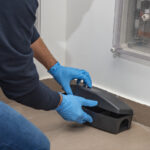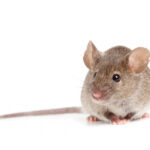Problems With Mice
In Stalybridge?
Professional Mice Control In Stalybridge
Need Help? Call Us On 0161 776 9832 For Expert Pest Control Advice On How To Identify Pest Infestations And Help Solve Your Pest Problem.
Youngs Pest Control
Need Help? Call Us On 0161 776 9832 For Expert Pest Control Advice On How To Identify Pest Infestations And Help Solve Your Pest Problem.
24 HOUR EMERGENCY RESPONSE
FAST RESPONSE
OVER 20 YEARS OF EXPERIENCE
PROFESSIONAL & SPECIALIST QUALIFICATIONS
NPTA MEMBER
DISCREET, UNMARKED VANS
DOMESTIC, COMMERCIAL & AGRICULTURAL
TREATMENT OF ALL TYPES OF PESTS
FAMILY RUN BUSINESS
FULLY QUALIFIED
Pest Control For Mice In Stalybridge
Why Choose Us
 Are you seeking an expert mouse control solution in Stalybridge? Look no further than us here at Youngs Pest Control. We are your local experts in dealing with those bothersome mice. Our team is well-trained and qualified to provide a fast, effective solution to your mouse problem. Our pest controllers are highly trained and knowledgeable about the latest techniques and products used in the industry.
Are you seeking an expert mouse control solution in Stalybridge? Look no further than us here at Youngs Pest Control. We are your local experts in dealing with those bothersome mice. Our team is well-trained and qualified to provide a fast, effective solution to your mouse problem. Our pest controllers are highly trained and knowledgeable about the latest techniques and products used in the industry.
We have over 20 years of experience providing professional pest control for mice. As experts in mice control, we understand the unique challenges of dealing with these pests. Our pest controllers are fully qualified and ready to handle any infestation, whether it's in a domestic or commercial setting. With our fast response and discreet, unmarked vans, you can trust us to eliminate mice effectively and provide a solution tailored to your needs.
Common Areas We Treat
 Basements and Cellars
Basements and Cellars
Basements and cellars often attract mice due to their dark, damp, and cluttered nature, providing them with the ideal conditions for nesting and foraging for food. Our expert pest controllers will provide a thorough treatment to eliminate mice in these areas and offer advice on preventing future infestations.
 Kitchen Areas
Kitchen Areas
Mice are frequently found in Kitchens due to abundant food sources and potential nesting sites. They can be found behind appliances, such as refrigerators and stoves, where crumbs and food residue accumulate. Our team will provide targeted treatments to eliminate mice in these areas and offer advice on keeping your kitchen pest-free.
 Garages and Sheds
Garages and Sheds
Garages and sheds are common areas where mice are often found. These areas attract mice because they provide shelter, warmth, and a ready food source. Mice can easily fit through small openings in doors and walls. Once inside, they can cause damage to stored items and electrical wiring. Our team will implement effective treatments to eliminate mice in these areas and provide recommendations for preventing future infestations.
What to Expect
 Customers can expect a comprehensive and efficient process when seeking pest control for mice. Our experienced team will meticulously inspect your premises to identify the extent of the mice issue. We will then devise a customised treatment plan tailored to your specific needs. Our pest control application will effectively eliminate the mice, and we will schedule follow-up visits to ensure long-term eradication. Additionally, we provide prevention tips and advice to help you avoid future infestations. With our mice control treatments, you can expect a solution-oriented approach to address your pest problem.
Customers can expect a comprehensive and efficient process when seeking pest control for mice. Our experienced team will meticulously inspect your premises to identify the extent of the mice issue. We will then devise a customised treatment plan tailored to your specific needs. Our pest control application will effectively eliminate the mice, and we will schedule follow-up visits to ensure long-term eradication. Additionally, we provide prevention tips and advice to help you avoid future infestations. With our mice control treatments, you can expect a solution-oriented approach to address your pest problem.
Pest Control for Mice in Commercial and Residential Areas
Residential
Mice can have a detrimental impact on daily life in several ways. They pose significant health risks by spreading diseases like Salmonella and Hantavirus, which are harmful to humans. Their constant gnawing can cause severe property damage, including chewing through electrical wires and damaging insulation and woodwork. We provide pest control services to various Stalybridge homes, including flats, detached houses, and semi-detached homes. Our experienced team can effectively manage and eliminate mouse infestations in any type of property.
diseases like Salmonella and Hantavirus, which are harmful to humans. Their constant gnawing can cause severe property damage, including chewing through electrical wires and damaging insulation and woodwork. We provide pest control services to various Stalybridge homes, including flats, detached houses, and semi-detached homes. Our experienced team can effectively manage and eliminate mouse infestations in any type of property.
Business
The potential consequences of irregular pest control treatment of businesses such as restaurants, cafes, pubs, and warehouses can have detrimental effects on the reputation of these establishments. Customers expect a clean and safe environment, and a mice infestation can raise concerns about hygiene and quality. Regular and effective pest control measures are essential to maintain a good image and ensure customer satisfaction.
Youngs Pest Control is your Local Expert for Mouse Problems in Stalybridge.
We are the local experts in Stalybridge when dealing with mouse problems. Our team here at Youngs Pest Control is dedicated to providing effective and reliable treatments for mouse infestations. We provide prompt responses and thorough inspections. Our experienced technicians have extensive knowledge of mouse control.
We also service Neighboring areas like:
Dukinfield
Ashton-under-Lyne
Millbrook
SK15
Do Mice cause damage?
Mice can cause major damage to homes and property. They chew on various materials, including wires, insulation, and furniture. This can lead to electrical faults, fire hazards, and costly repairs.
Do Mice affect your health?
 Mice can carry harmful diseases such as salmonella and hantavirus, which are transmitted through their droppings and urine. They can trigger allergies and asthma with their fur and dander. Their presence can cause stress and anxiety. Mice can contaminate food and food preparation areas, leading to food poisoning.
Mice can carry harmful diseases such as salmonella and hantavirus, which are transmitted through their droppings and urine. They can trigger allergies and asthma with their fur and dander. Their presence can cause stress and anxiety. Mice can contaminate food and food preparation areas, leading to food poisoning.
When it comes to pest control for mice in Stalybridge, we here at Youngs Pest Control are your go-to exterminators. We understand the damage mice can cause and the potential health risks they pose. We can eliminate mice from both commercial and residential areas with our effective treatment methods. Don't let mice take over your property; choose us for a solution-oriented approach to mouse problems.
Frequently Asked Questions
How can I distinguish between rat and mouse droppings?
- Rat faeces are larger than mouse faeces and typically measure around 0.5 to 0.75 inches in length. Mouse faeces are smaller, averaging around 0.1 to 0.25 inches.
How many baby mice can a female mouse have at once?
- A female mouse can have 5-10 litters each year, with each litter having 5/6 babies on average.
How do I know if I have a mice infestation?
- Look for droppings, chewed food packaging, and small holes in walls. Unpleasant odours and squeaking sounds are also signs.

